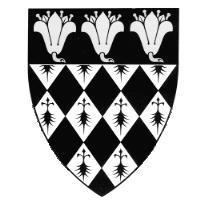Established 1548 Religion Anglican Colors White, Navy Blue | Master Ian Colling Phone +44 1280 846300 Founded 1548 | |
 | ||
Motto Sicut Lilium (As Lillies) Location Waynflete AvenueBrackleyNorthamptonshireNN13 6FBEngland | ||
Magdalen College School, Brackley, is one of three "ancient" Magdalen College Schools, the others being its sister colleges in Oxford and Wainfleet, Lincolnshire. Located in Brackley, South Northamptonshire, the school is on two sites (see history section): the former Secondary Modern site accommodates secondary schooling to Year Eleven, after which students transfer to the St John's site (the old MCS) for most of their lessons during the Sixth Form. Today the school has approximately 1,500 students, and averages 59% A*–C at GCSE.
Contents
Previously a boys' grammar school, then a voluntary controlled comprehensive school, it converted to academy status in January 2013. The St John's site is still owned by Magdalen College, Oxford, and they are represented on the governing body.
History
The site now occupied by the school was originally the Hospital of St. James and St. John, founded around 1150 by Robert le Bossu, Earl of Leicester. In 1484 it was given to Magdalen College, Oxford. By 1548 there was a school at the site, its initial purpose being to allow pupils of the college in Oxford to escape the plague affecting the city at the time.
In September 1973 MCS merged with the Girls Grammar School (Brackley High) and Brackley Secondary Modern School to form a new comprehensive school on two sites, while the girls' school was converted into the new Southfield Primary school. This school has approximately 1500 students
Chapel
Formerly a chapel for the hospital of St. James and St. John, the earliest datable parts are late-12th century, although many parts are 13th century. The chapel underwent a major restoration between 1869–1870 by Buckeridge.
It is constructed of stone rubble and is one of the largest school chapels, and the oldest school chapel still in use in England. It remains in regular use by the school, Church of England and local community.
Head teachers
Notable former pupils
Notable former pupils include:
